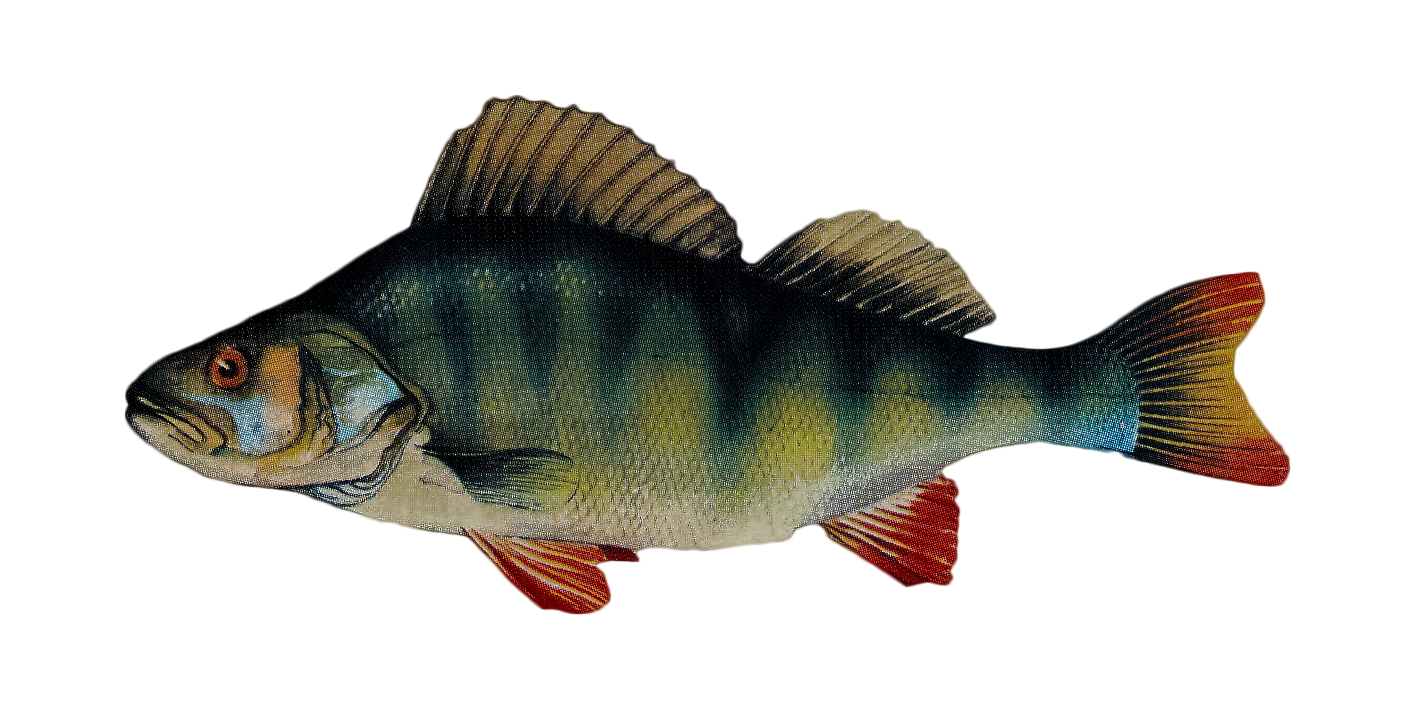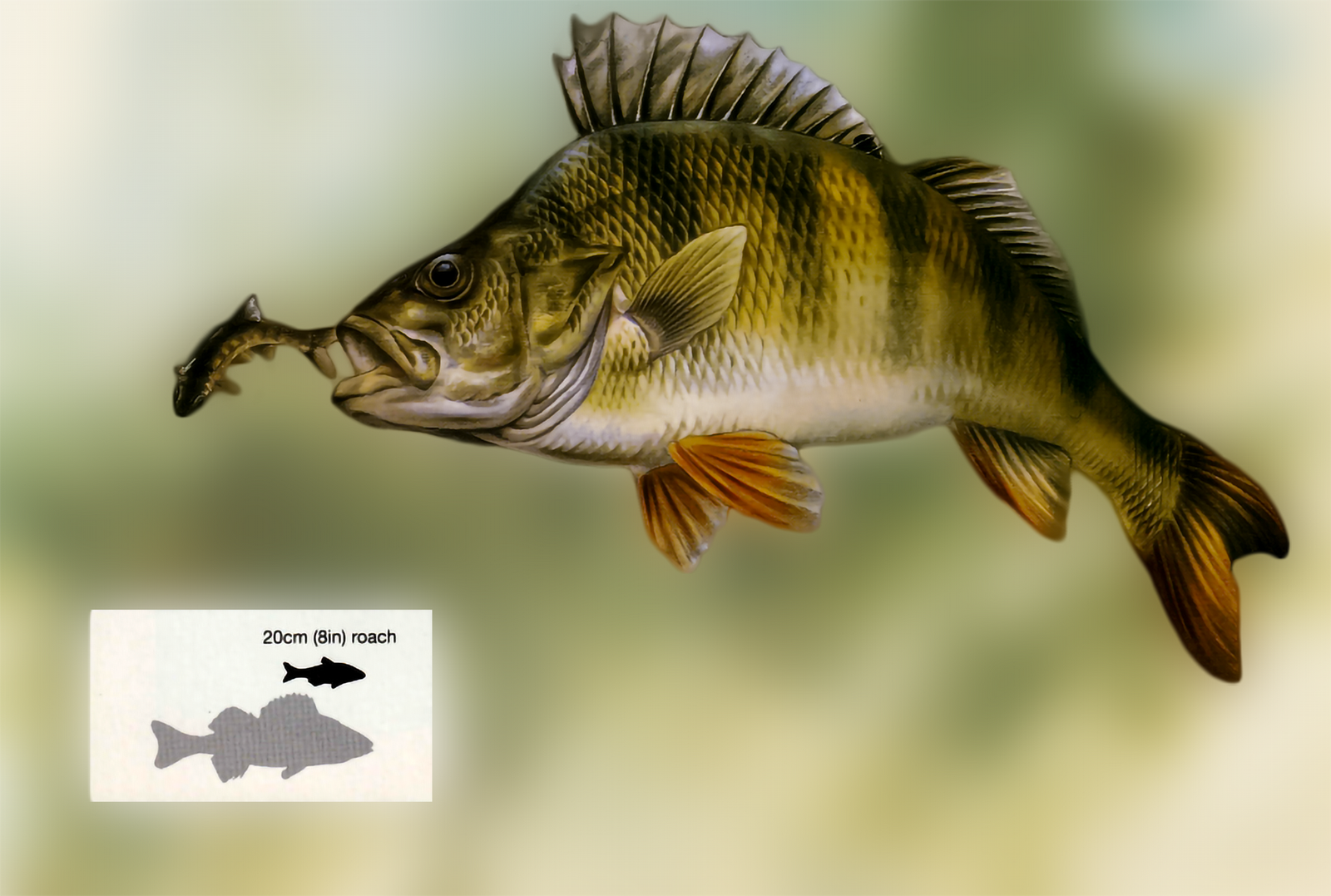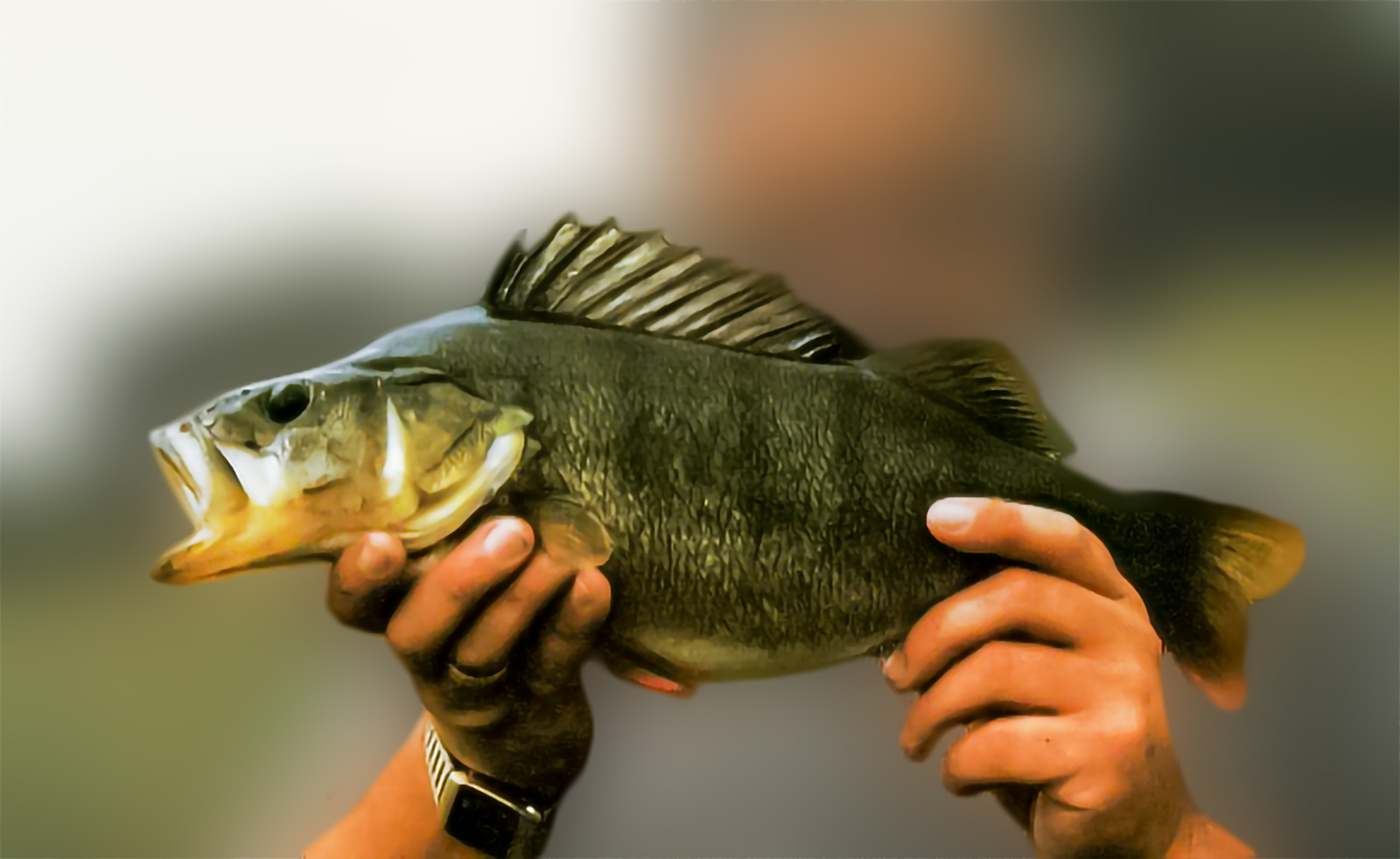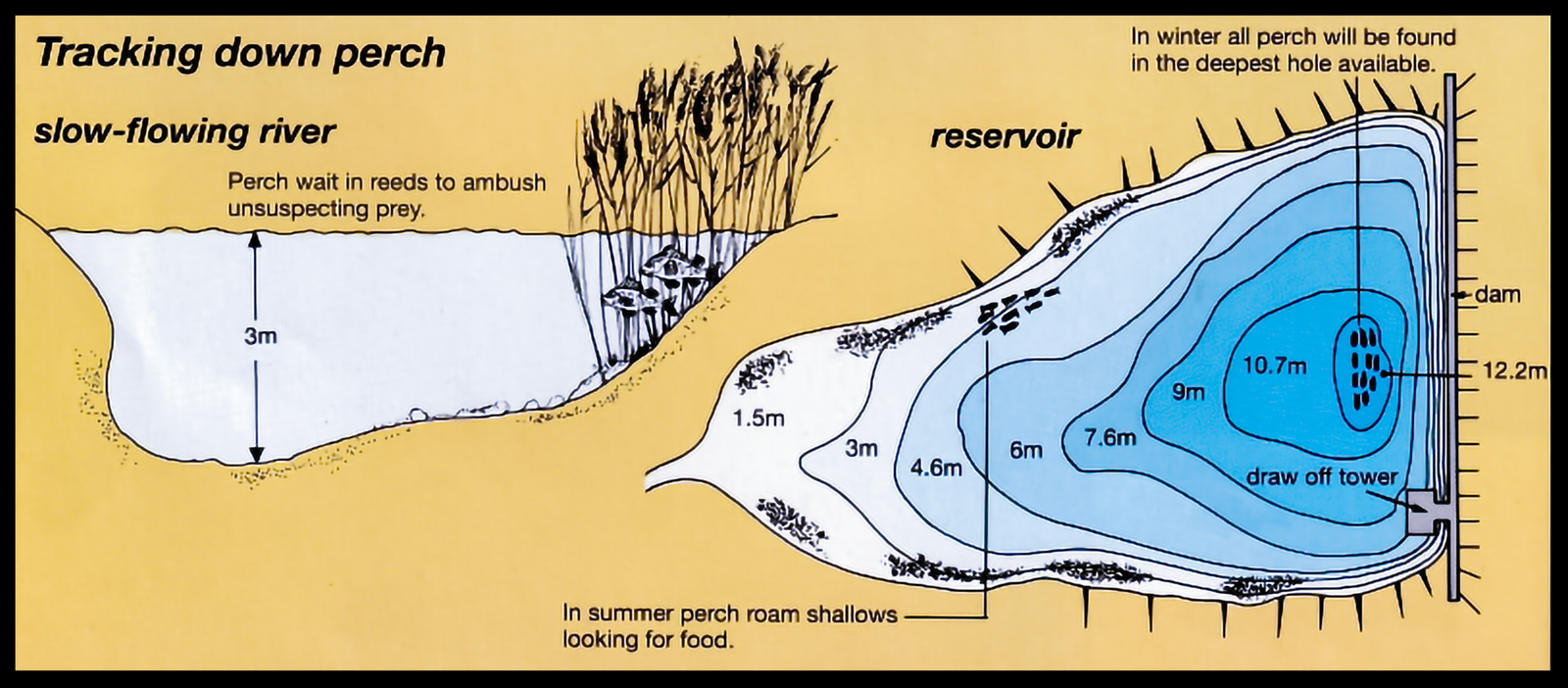

"Difficult to mistake for any other British fish, this 'stripey predator' will attack almost anything small enough when young".
Those that live to grow large become far more cautious.

Average Weight - In the UK, Perch normally grow to between 4-10 inches (12-25 cm) in length and weigh between 4-12 oz (250-750 g). A Perch weighing 1 lb (0.45 kg) would be considered a very decent catch. Specimens between 2-3 lbs (0.9-1.4 kg) are out there but are extremely rare.
Distribution - The areas without Perch are generally upland - very few waters lost their entire populations during the 1960s-70s Plague. However, big perch are still not as common as they were before the disease.
"The Perch is a handsome fish, with striking looks well suited to its predatory life".
Its flanks are an olive-green with six or seven black stripes, camouflaging it among weeds and reeds. The tail is rather small, so it is not a high speed swimmer, but it can cruise fairly fast for long periods.
In the 60s and 70s and ulcer disease decimated the perch population in Britain.
On waters where tests were carried out it was estimated that up to 99% of the perch had died, with only a very few immature fish left.
Even
though the disease appears to have died down, its effects are still being felt.
In many waters, which previously held large specimens, there are now numbers of
stunted perch.
With the
sudden death of all the big perch which had kept the numbers
of juveniles down, far more young have survived.
This leads to greater
competition for the available food, so they all remain small.


The Perch's first Dorsal Fin is separate from the second and has 14-15 spines. It can be raised to frighten predators and rivals.
..."Perch are hunters, preying on other species."
Fry feed on water fleas and other tiny crustacea but they soon graduate to insect larvae such as bloodworms. If small enough fish are available, Perch switch to a mainly fish diet when they weigh about 40z (113g).
Perch that have made this transition grow very rapidly. Where there is no prey of this type, Perch remain stunted, weighing only 4oz (113g) at about seven years old.
Young Perch hunt in schools, lying in wait among water plants, until small fish such as Bleak or Roach stray too close.
The school then sets off in pursuit, harrying the quarry until it is too tired to swim further.
Perch catch their prey by biting the tail repeatedly from behind and below to restrict swimming. Characteristically the capture and swallowing of the Perch's prey is always tail first.
Perch usually eat small fish with a 1-2lb (0.45-0.9kg) Perch specimen typically taking prey of about 1-2oz (28-57g). Odd though it might seem, Perch seem particularly fond of catching and eating the fry or smaller members of their own species.


Specimen Perch as large as this 3lb 6oz (1.5kg) beauty
are well worth recording on film, though there are tales of fish last century
which reached 7lb (3.9kg).
One day British waters may again produce such
monsters?
Perch prefer slow-moving or still waters with a good head of small prey species.
Good visibility is essential for their style of hunting and so they do best in clear water. They can also survive in relatively fast flowing rivers if there is not too much suspended silt making the water cloudy.
Perch are not found either in high, rocky streams or in acid lakes.
When young, Perch form schools consisting
of one age group but as they grow older they become more solitary.
This is not
because the older fish lose the instinct to form schools but is due to the
shrinking of each school of Perch as fish die and are eaten.
Male Perch can be sexually mature at only 6-12 months old even though they are usually no more than 5-8cm (2-3in) long whereas Female Perch are seldom ready to mate until they are three years old.
Spawning occurs between March and June when the Female Perch lays up to 300,000 eggs in lacy strands over weeds, twigs, stones or any other solid object in the shallows. The eggs begin to hatch out about a week after they are fertilized by the Male Perch.
The females usually grow to a larger overall size than the males.
